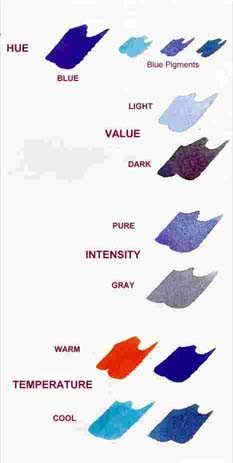 |
Color isn't a foreign country, but it has its own language. Familiarize yourself with the vocabulary of color so you can communicate easily with other artists to solve color problems.
The properties of color are hue, value, intensity and temperature. These words describe the basic characteristics of color and are used in both color theory and practice. Hues are either chromatic (having color) or achromatic (colorless neutrals). Values are used traditionally in a range from white to black, but high-key or low-key value leads to expressive color. Intensity (purity or grayness) contributes, along with value, to the effect of light in paintings. Color temperature creates mood and spatial effect: cool = far and warm = near.
Pigments, the coloring matter of paints, have different characteristics, such as transparency or opacity, intensity, tinting strength, staining, spreading and granulating qualities. Select and use your paints to take advantage of each pigment's characteristics, watching for variations peculiar to different brands. Learn the language of color, then put the terminology to work in planning and critiquing your artwork.
See also The ABCs of Color for some basic color-word definitions. For more detail and more definitions, read my book, Exploring Color Revised.
|